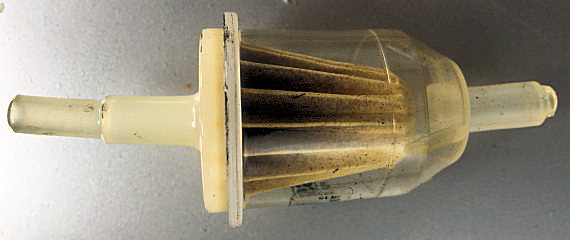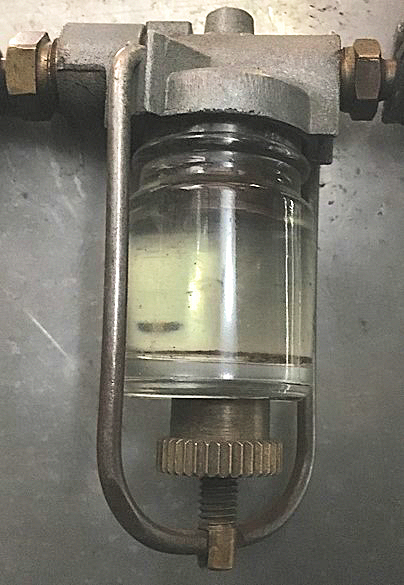


AUSTIN SEVEN FUEL SYSTEMS AND FILTERS ORIGINAL AND UPDATED
During the development of the Austin Seven, the fuel system went through a number of changes. Starting with the petrol tank under the bonnet with gravity being utilised to feed the carburettor. The fuel tank changed slightly but remained gravity fed until the RP, when the tank moved to the rear with a mechanical fuel pump driven by the camshaft to suck the fuel from the rear tank to the front and it remained in this form until the end of production. Some users have removed the mechanical pump and fitted an electrical fuel pump, mainly an SU pump. But what of the fuel filters and where do they hide themselves. Assuming a standard car, the cars developed as follows:
| YEAR | TANK | STRAINER/FILTER | GRAVITY/PUMPED | PETROL GAUGE | |||
| 1922 - 1930 | 4 gal. D-shaped scuttle mounted with on off tap | Strainer on tank entrance, filter within carb | Gravity | None / Dip stick | |||
| 1930 - 1931 |
|
|
Gravity |
|
|||
| 1931 - 1932 | 5 gal. rectangular scuttle mounted short tank with tap for off/on and reserve | Strainer on tank entrance, filter within carb | Gravity | None / Dip stick. Vans had petrol gauge | |||
| 1932 - 1937 | 5 gal rear mounted no tap | Strainer in tank on exit filter on carb/fuel pipe | Pumped | Petrol gauge | |||
| 1937 - 1939 BIG 7 | 6 gal rear mounted no tap | Strainer in tank on exit filter on carb/fuel pipe | Pumped | Petrol gauge |
| Please note the table is a guide, as there
are exceptions as Austin overlapped production / used up old stock. Also
cars have been fitted with different tanks, carburettors etc.
My special is based on a Ruby, so 5 gal. tank petrol gauge reads 2, 4, 6, F so wrong gauge, but does work. Also one member of the club has a van petrol tank in a saloon car. Cleaning the filters is relatively easy and also, easy to replace depending on location. • Strainer at tank entrance, easy to lift out and clean, but often missing. • Strainer within tank very difficult to clean and may need tank to be removed, to clean often removed, caution if you decide to seal the inside of the tank, as the strainer will clog up. • Filter within carburettor / on pipe, easy to remove and clean but may be missing. There are old and modern external / inline filters which can be used, some are better than others and all vary in price. When fitting a filter, it is worth noting that it can restrict the flow of fuel, especially if it has a lot of muck to filter out. More apparent on a gravity system. I have tried three on my special with varying success. The car has a 12v SU pump under the bonnet and came with a £2 plastic filter. This worked fine, but I always thought it a bit naff and difficult to see when to change, apart from discolouration. I was tempted by a nice chrome effect one, which appeared to show the muck better for £10. To access the filter, the outer casing is screwed in, sounds good, but when putting the hoses on, any twisting undoes the filter. I used this for a month, until racing last year, it came apart by itself in the paddock, to be replaced by the £2 filter. Looking for a better solution, Bernard suggested a sediment filter from Mayhill Tractors, but this needed bulk head fitting (currently £13.95 on Ebay). I then managed to find this one at Beaulieu which I guess is off a motorbike, marked Zenith DA- but can find no information, it is 3” high. This one has been on the car for some time now and as you can see from the photo, doing its job. A sediment filter is probably the best solution and looks more period. Douglas Alderson DA7C |


